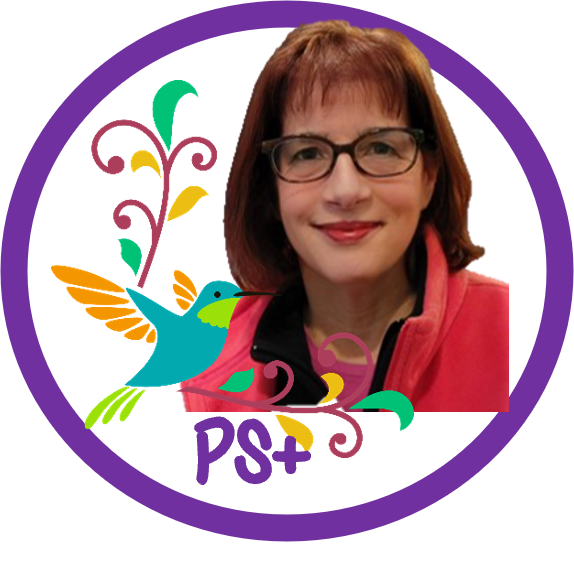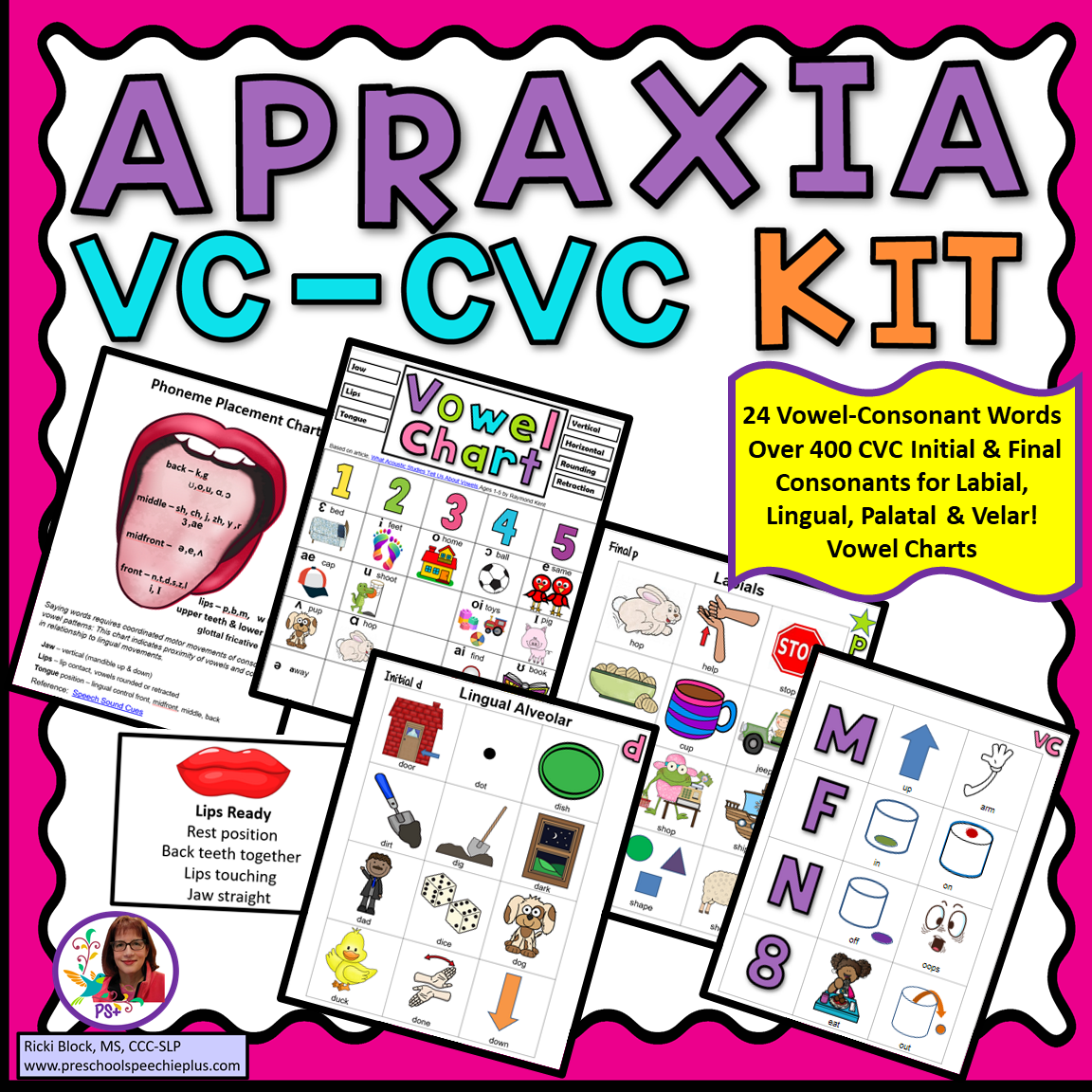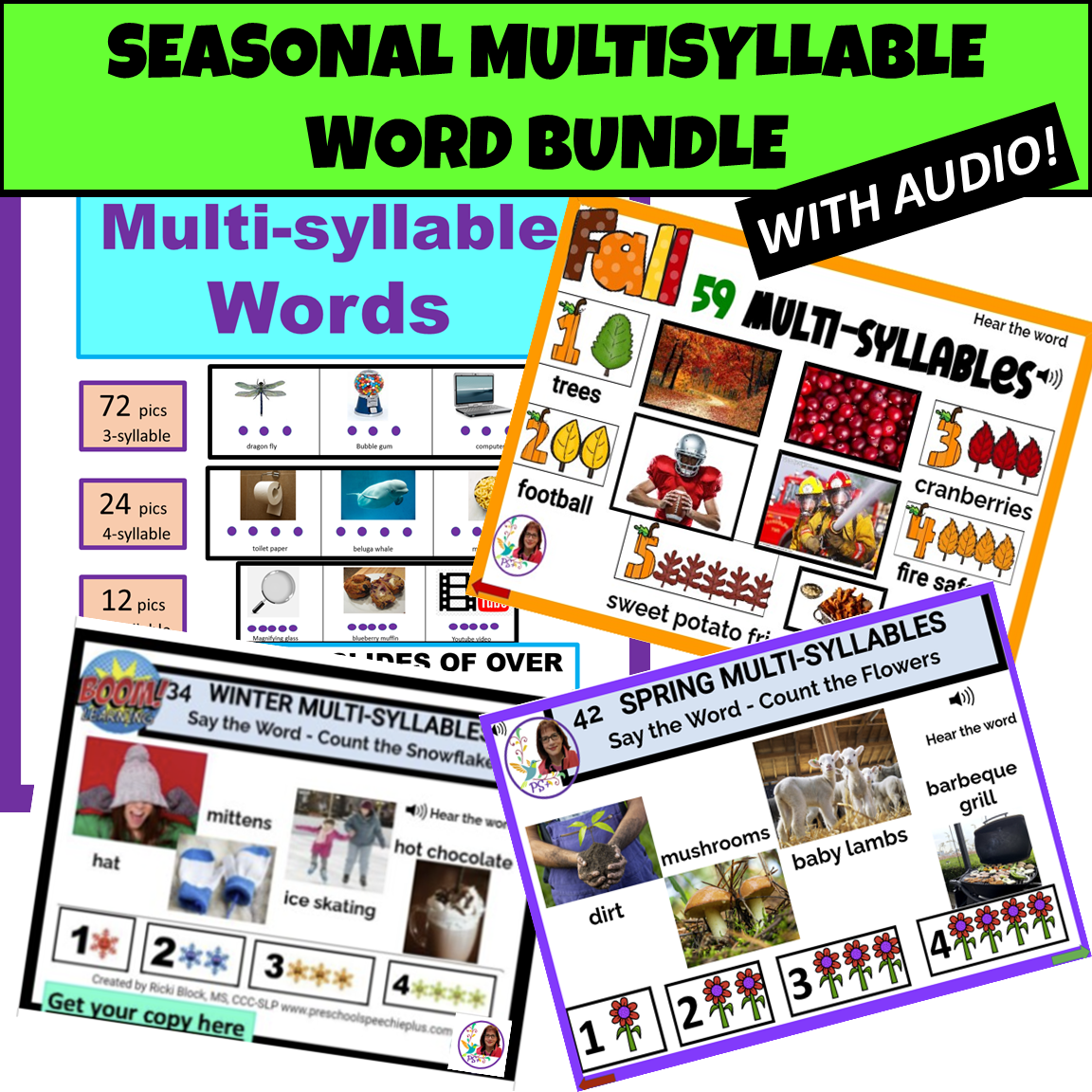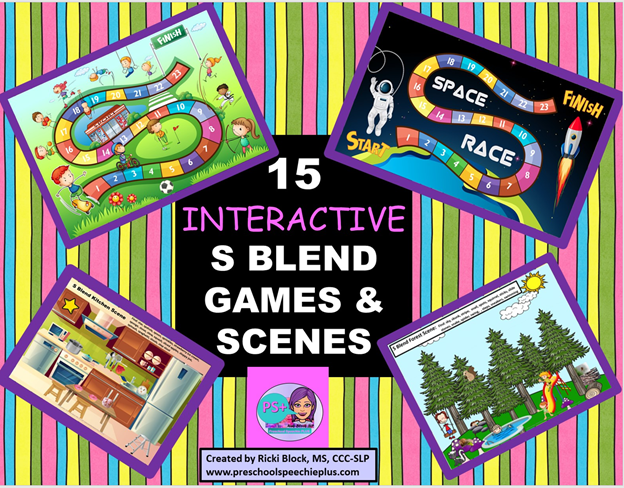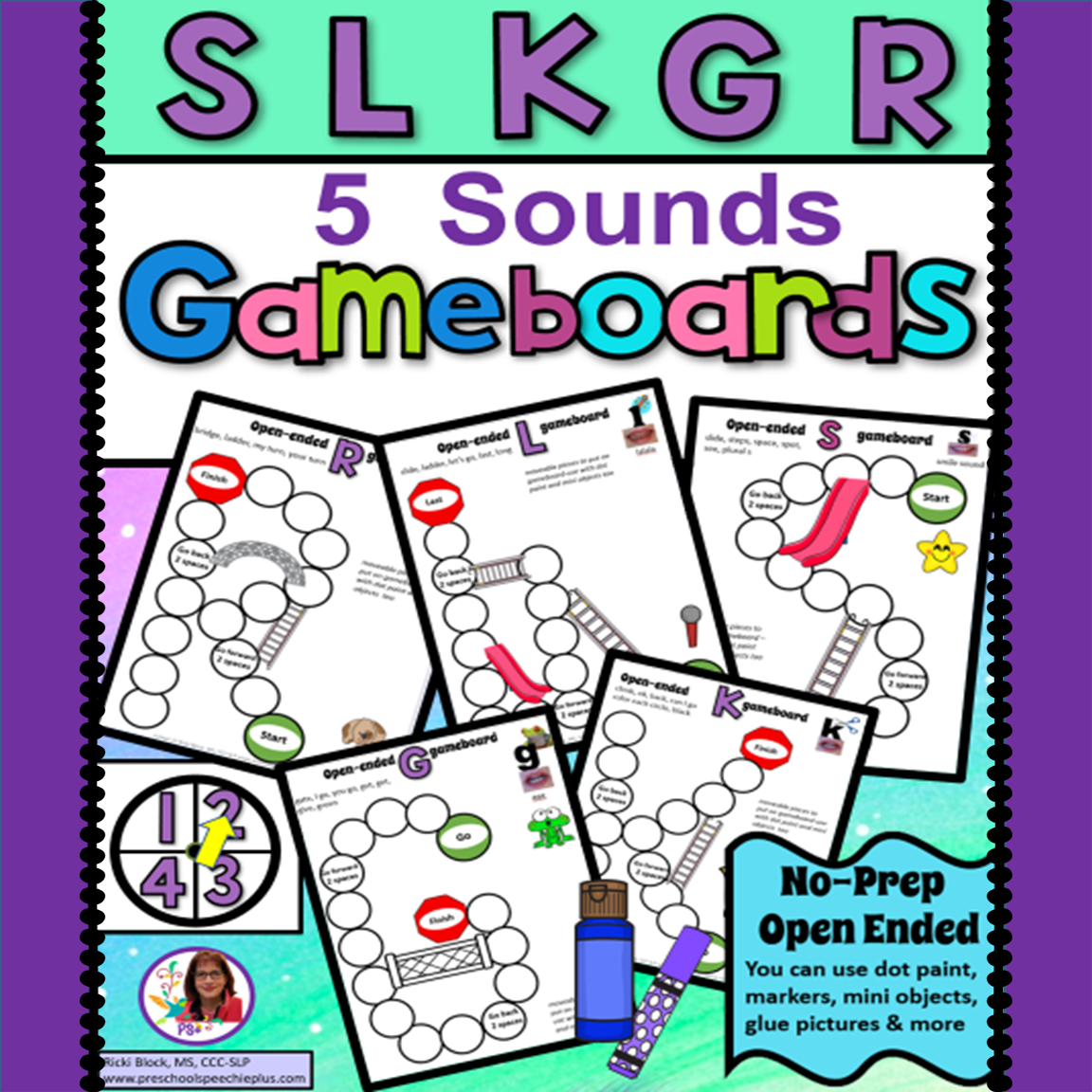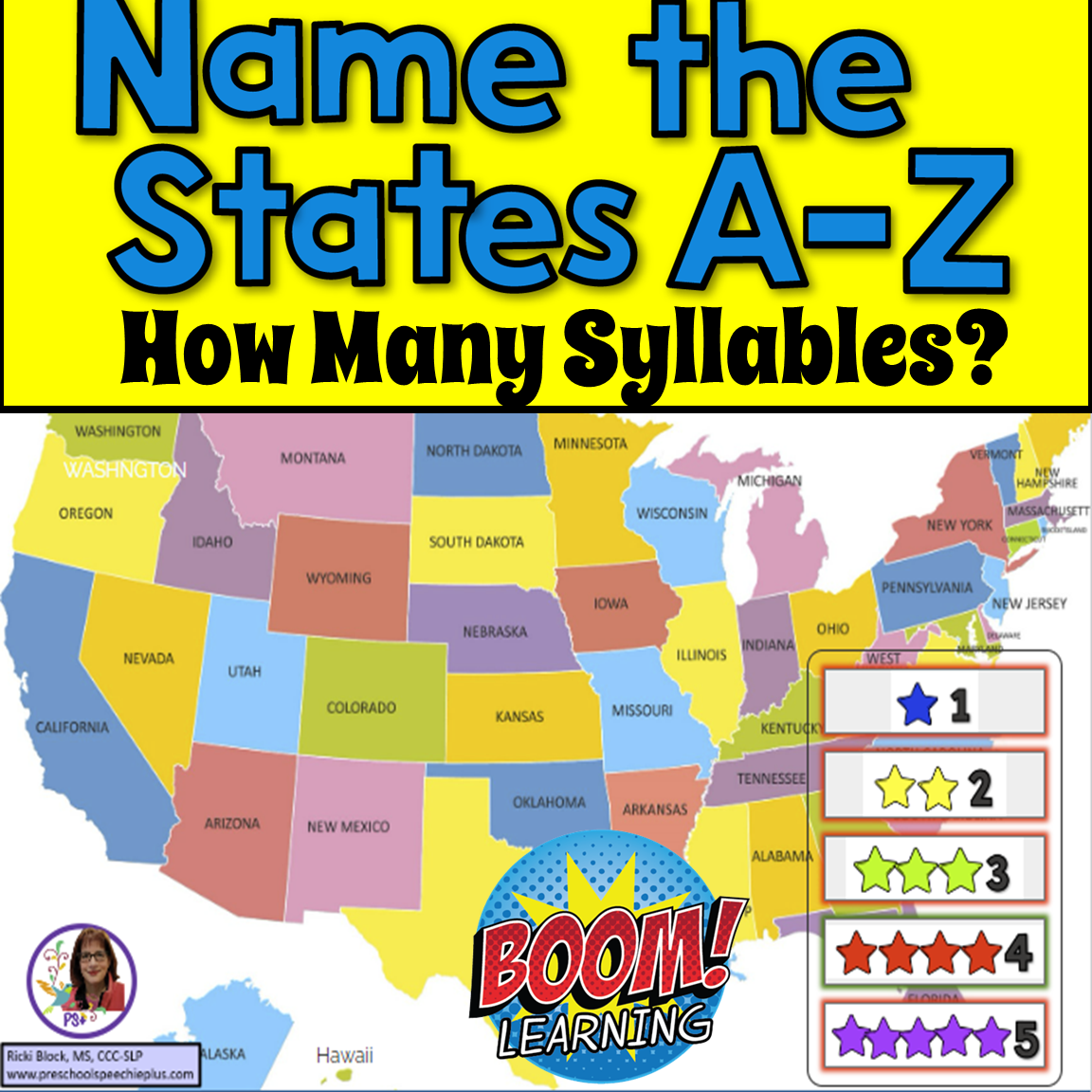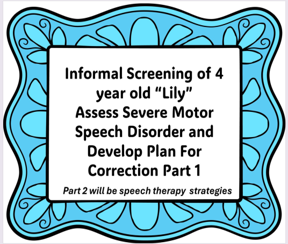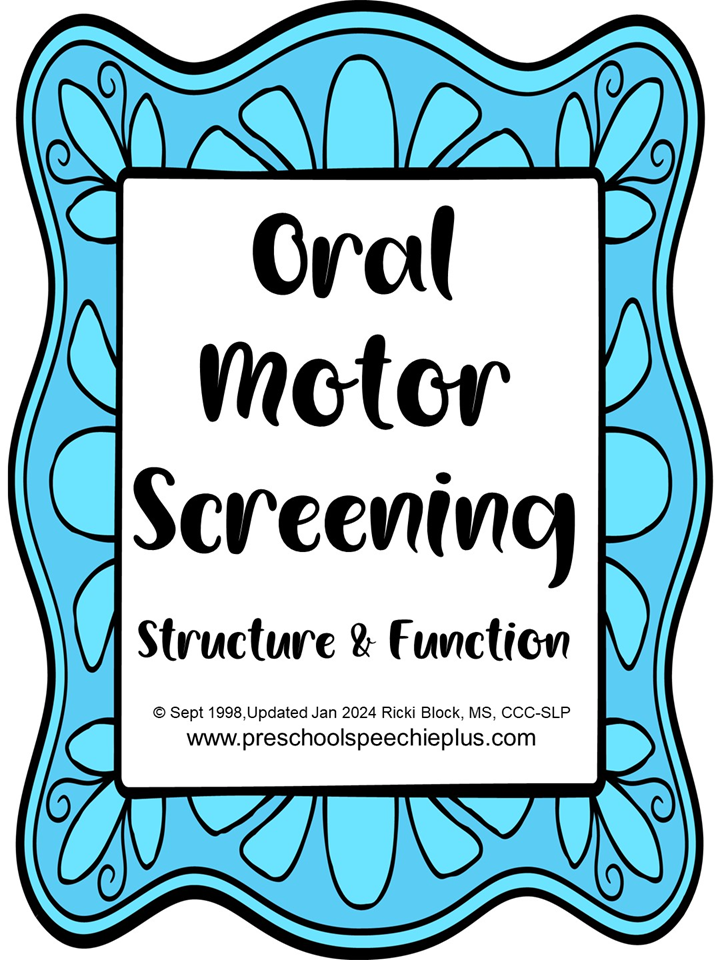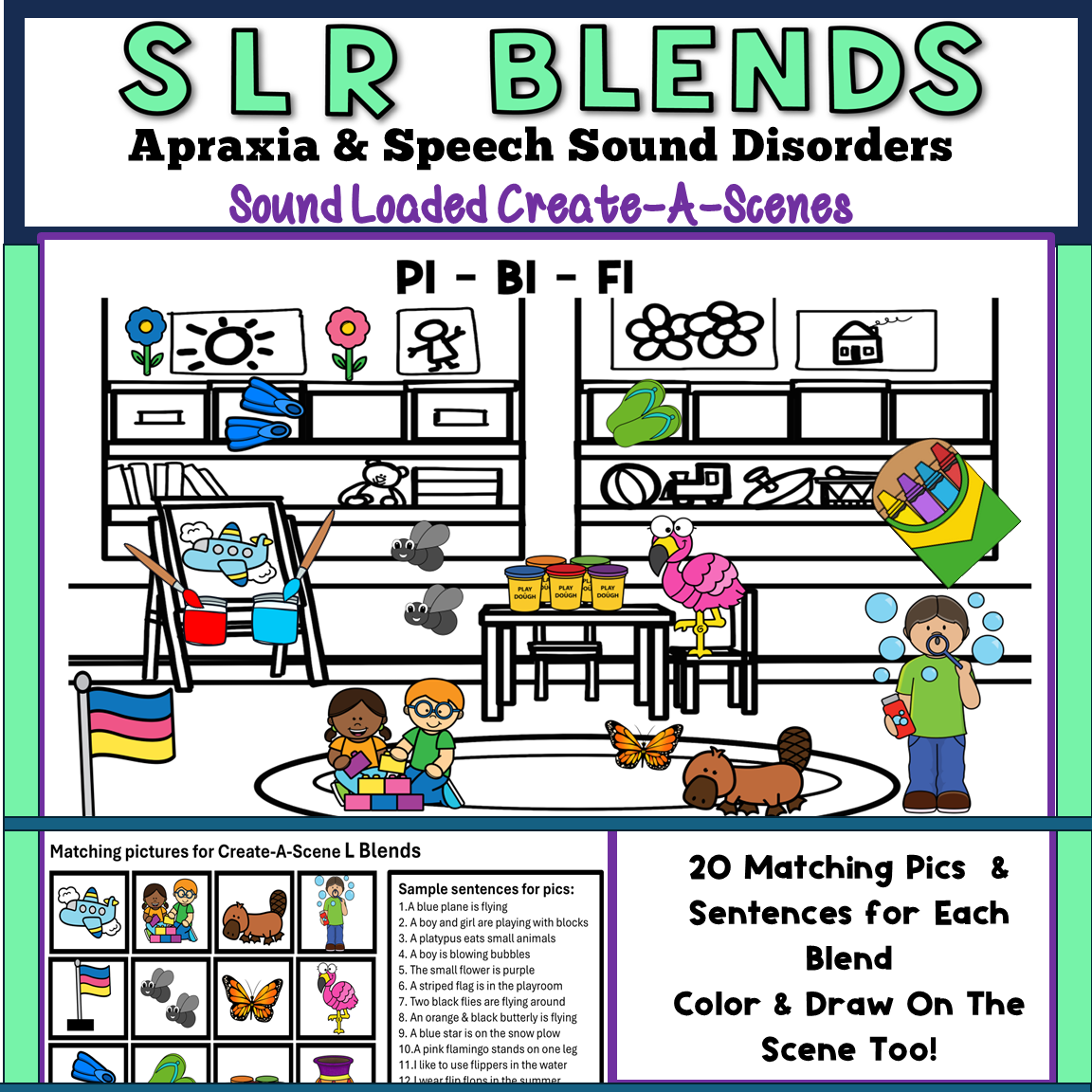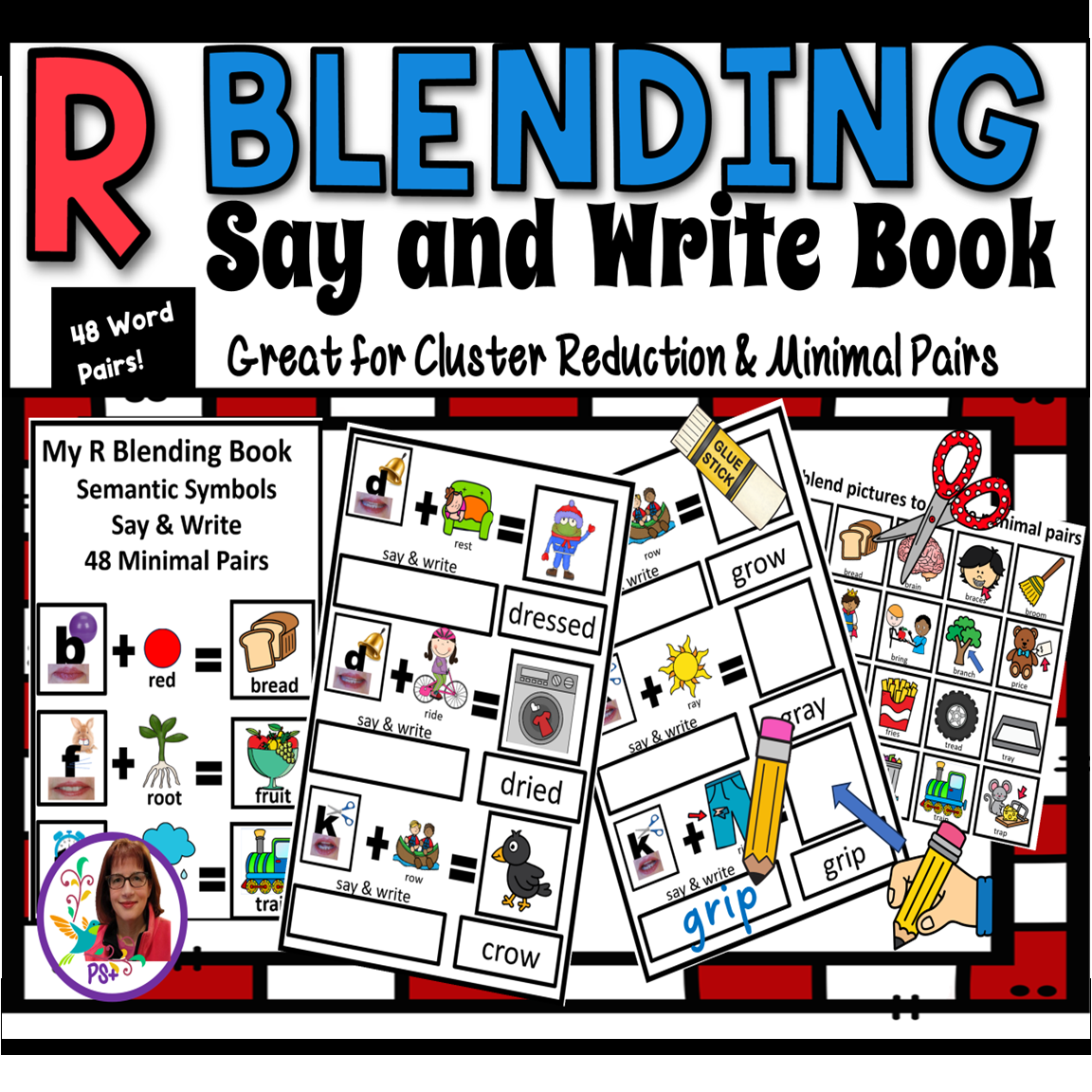
APRAXIA
•SSD
PHONOLOGICAL PROCESSES
•KNOWLEDGE OF PERFORMANCE
KNOWLEDGE OF RESULTS
•
APRAXIA •SSD PHONOLOGICAL PROCESSES •KNOWLEDGE OF PERFORMANCE KNOWLEDGE OF RESULTS •
A colorful promotional graphic for the 'Ultimate Apraxia SSD Bundle' featuring 1000 pictures and 475 pages of resources for speech therapy, including cue cards, sound sheets, and action task add-ons.
Speech Sound Photo Cards with demo cards and charts
Colorful advertisement for 'Ultimate Mini Artic Bundle' with text describing over 30 no-prep games and craft sets, including 1000 color and black-and-white pictures, 600 word cards, and 241 pages. Features sample worksheets, coloring activities, and a photo of a smiling girl with glasses.
A young child sitting on a stuffed animal, reading a book surrounded by containers of more books, with a banner at the top reading 'Ideas for Every Season' and a title mentioning '71 Favorite Predictable Books for Children with Apraxia Language Delays Phonological Processes'.
UPDATED!!
Moo Moo's Boo Boo - practice lip rounding for U and O- BOOM Cards and PowerPoint
Cover of an educational card set titled 'Apraxia Medial CVCV+' with colorful drawings of sun with sunglasses, birds, a worm, clouds with rain, and various visual cards, indicating it is an add-on to a CV-CVCV kit designed for speech therapy.
Animal Sound practice with reduplication e.g. moo moo, ney ney
Cover of educational book titled '300 Multisyllable Words' with colorful border, with sample pages showing pictures and words for multisyllable words, and a click icon with the number 3, promoting tips for phonological awareness.
Hi-Bye - practice early sounds H, B and with AI diphthong
CVCV practice
Speech Sound Success - strategies for speech sound correction
Apraxia Vowel list - FREE
Multisyllable words for motor phoneme sequencing
Palatal Tongue Sounds - SH & CH
Sentence Building - focus on Final S-Z
Final S-Z BOOm Cards
S Blend Strategies included
S Blend Games your students will love!
K & G with audio BOOM Cards
Apraxia Word List revised
Cover of a speech therapy book titled 'Exclamations & Fun Words Action Book of Sounds' with colorful illustrations of animals, objects, and children, highlighting over 100 pictures for early language development.
Collection of educational task cards and scenes for early language development, including sounds of vehicles and actions, with images of a motorcycle, car, school, playground, and various speech therapy tools and activities.
A bundle of educational materials titled "Exclamations & Fun Words Action Book of Sounds & Task Cards" consisting of over 200 pictures. Includes charts, checklists, and activities for early language development, Apraxia, and SSD, featuring pictures of animals, objects, and scenes for teaching sounds and language skills.
Educational poster titled 'S Blending No-Prep Practice' featuring various practice sheets with words and images for speech therapy.
A colorful promotional poster advertising an Apraxia Kit Bundle with materials and resources for speech therapy, including word lists, vocabulary charts, and visual aids.
Image with colorful text showing vowel development charts, including charts for vowels in simple words and phonetic symbols, used for speech therapy and learning.
Educational poster for R Blend Carrier Phrase Warmups and Story Creation with colorful cartoons of props, a dragon, trains, and various objects for literacy activities.
UPDATED
Colorful educational poster for PBMW Sounds, focusing on early language development, with cartoon illustrations for carrier phrase warmups
Book cover titled '3 Billy Goats Gruff' featuring cartoon illustrations of three goats, a troll, and a bridge, with additional text about story reading and comprehension activities.
Educational worksheet titled 'S BLENDING Say and Write Book' featuring images and words that demonstrate the blending of the letter 'S' with various sounds to form words such as speech, snap, sneeze, spout, and stop.
A colorful educational materials cover titled 'TDNL SOUNDS' focused on apraxia, SSD, and early language, featuring cartoon characters like a turtle, a dog, a lion, and a nurse, with sheets displaying activities like matching sounds, creating scenes, and practicing carrier phrase warmups.
Educational poster titled 'L BLEND Carrier Phrase Warmups & Create a Story/Game Scenes' featuring colorful graphics, props, and activities for teaching the 'L' consonant blends, with illustrations including a magnifying glass, a dog on a squeaky cushion, a bee, a cartoon airplane, and various other teaching materials and games.
Educational game materials for teaching blend sounds, including colorful boards with words and images, props, scene cards, and instructions for creating scenes and games to practice s blends such as sp, sm, sw, st, sl, and sk.
Cover image of a collection of five open-ended game boards for speech therapy, featuring colorful graphics and spaces for dot paints, markers, mini objects, and glue pictures, with a title "5 Sounds Gameboards" and examples of each board for sounds S, L, K, G, and R.
Educational poster titled 'SL&R Blend Say & Write Spinners' displaying four colorful pronunciation wheels with blends 'st', 'sp', 'sl', 'br', 'tr' and a worksheet with words to practice blending sounds, all on an orange background with cartoon children, a teacher's photo, and playful fonts.
A colorful map of the United States showing each state with the title 'Name the States A-Z How Many Syllables?' and a legend indicating the number of syllables for each state, from 1 to 5, with corresponding star icons in different colors.
Cover of educational material titled 'Multisyllable Words 30 Word Sample FREEBIE' showing images of a dragonfly, bubble gum, and a computer with their words and syllable counts, and a note about a complete set with over 300 multisyllable words on TPT.
A white poster with multiple sections of black text discussing common phonological processes, apraxia signs, and intelligibility ages, attributed to ASHA, Caroline Bowen, and Ricki Block, with a website URL at the bottom.
Colorful educational game set packaging featuring game boards and cards for five favorite games with artic picture cards, including progress monitoring, game board, vowel pictures, labials, and final consonant deletion activities, designed for speech therapy and language development.
Educational poster with tips for palatal blending of sounds CH, J, and SH, including practice worksheets and visual aids for speech therapy.
A sign titled 'Informal Screening of 4 year old Lily, Assess Severe Motor Speech Disorder and Develop Plan For Correction Part 1, Part 2 will be speech therapy strategies.'
A presentation slide about treating a 4-year-old with a motor speech disorder, featuring a photo of a young girl with light brown hair in a purple decorative frame, and text detailing the treatment plan and session information.
Cover page for a presentation on oral motor screening, discussing structure and function, with a decorative blue border and black text.
Educational poster titled "My Funny Bunny" promoting CVCV+ phrases, vowel /i/ sounds, AAC symbols, and speech therapy activities. Features a smiling boy holding a chalkboard with the text "No Prep Interactive Digital or Printable," bunny with sunglasses, and a smaller bunny with question marks and puzzle pieces.
Educational poster about speech sound disordres focusing on 'sh', 'ch', and 'j' sounds, featuring matching pictures, sentences, and scenes for color, draw, homework, practice, digital or printable activities.
Educational coloring sheet about SLR blends for speech sound disorders, featuring colorful illustrations of objects and animals, with matching pictures and sentences for learning activities.
Educational resource titled "R Blending Say and Write Book" with colorful pages showing phonetic word pairs, pictures for blending, and instructions for activities, designed for speech therapy and early literacy development.

Colorful educational poster advertising speech sound activity bundles for early and later sounds, each with black and white pages for coloring, no prep needed, featuring images of colored glue bottles, paint, and worksheets.
Cover of an educational resource titled 'Minimal Pairs CV vs CVC for FCD' focused on apraxia and speech sound disorders, featuring three example pictures of words starting with different consonants, a woman with glasses in the lower left corner, and pink polka dots at the top and bottom.
Advertisement for a 1 page speech bundle with 25 color cut and glue sounds, featuring various educational activity pages and art supplies.
Promotion of the 'Ultimate Cariboo Game Bundle' featuring multiple Cariboo game sets for early speech, later speech, and growing vocab with colorful text and images of game boards.
RICKI IS PROMPT TRAINED 3 LEVELS
WHAT IS PROMPT THERAPY?
PRESENTED BY ROXANNE ISRAEL FUNTOTALK
READ READ READ!
I frequently use books related to speech and language skills. I suggest to parents to read to their children EVERY DAY!
AAC and PROMPT are a great fit!
It is so important to encourage talking when a child is using a device or light tech. The device does not replace their voice, it supplements it.
Yes, I do love toys and books! I can tie in many of my PROMPT goals using toys and books with a variety of goals and levels. I embrace the challenge with students who exhibit apraxia/dysarthria and utilizing their device during a session. The BTS Collaborate group is frequently sharing awesome materials. Check them out! WHAT IS YOUR FAVORITE TOY, BOOK OR ACTIVITY?
But there is so much more to PROMPT.
There are 9 core elements that are essential in PROMPT:
1. Use of tactile-kinesthetic information
2. Determining communication focus
3. Developing goals related to motor, language, cognitive and social function
4. Analyzing the SAO (System Analysis Observation) and MSH (Motor Speech Hierarchy- 7 Stages)
5. Determining what PROMPT support should be used
6. Making choices about the activity/toy/material
7. Ensuring many repetitions of motor/sound practice
8. Incorporating reciprocal turn-taking and choice making
9. Presentation of similar activities to provide structure
PROMPT Method creates a balance across the Social-Emotional, Cognitive-Linguistic and Physical-Sensory Domains - understanding the whole child. PROMPT encompasses trust, making connections, having fun, engaging in verbal/non-verbal turn-taking and more!
What do you like best about PROMPT?
